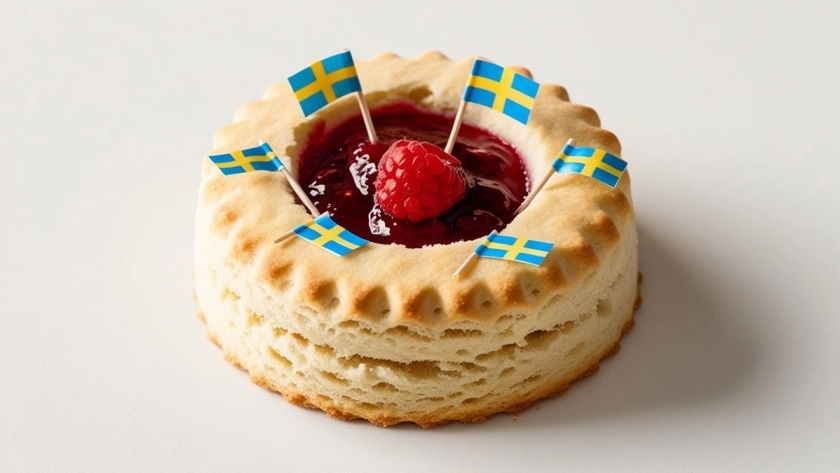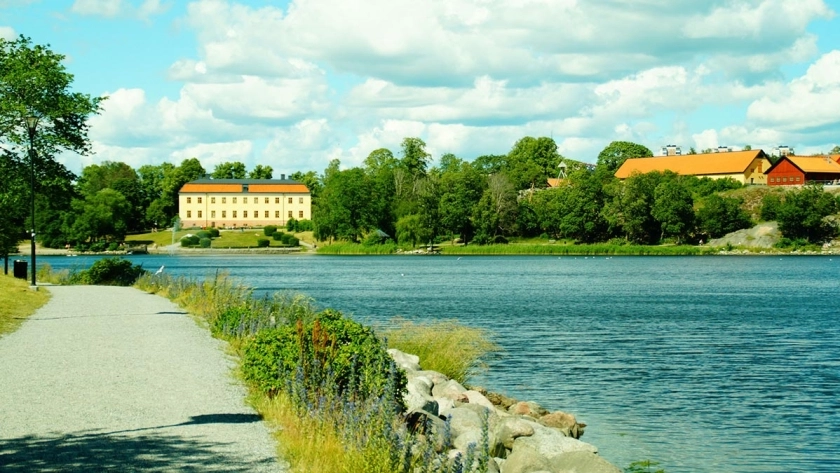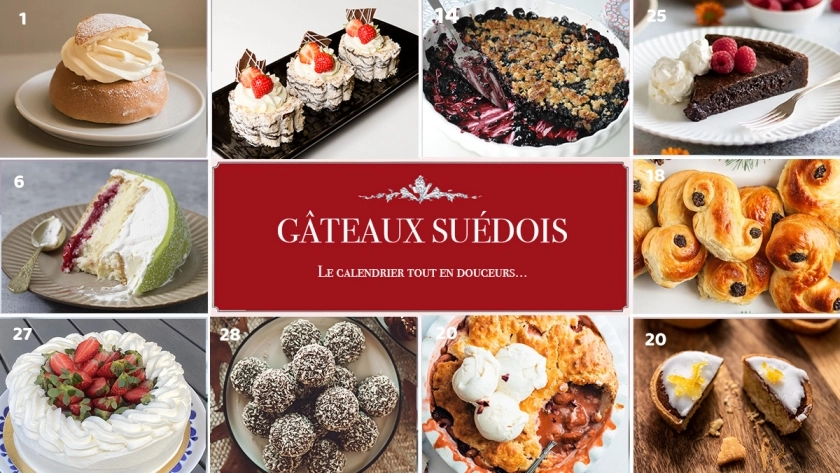
The hallongrotta, or "raspberry cave" in english, is a typical Swedish pastry that embodies both simplicity and indulgence. With its melt-in-the-mouth, crumbly shortcrust pastry and its delicately flavored raspberry filling, this Swedish dessert charms with its perfect balance of sweetness and sourness.
Legend has it that it gets its name from the characteristic shape of the cake, with a small cavity in the center, resembling a cave nestled in the heart of a sweet mountain.
Beloved by both children and adults, the hallongrotta has become a classic, often enjoyed with a cup of coffee during the famous fika.
In this article, we invite you to discover the story behind this irresistible cake, some of the anecdotes surrounding it, and of course, a video recipe to guide you through its preparation and help you recreate this delicious cookie-cake at home.
Get ready to succumb to the charm of this sweet and fruity dessert, straight from Sweden!
The concept of kafferep
Hallongrottor (the plural of hallongrotta) are part of a long tradition of Swedish baking: butter cookies have existed for a long time, probably since the late 18th century, and were often consumed during Swedish gatherings called kafferep, where people would come together (rep) around coffee (kaffe). The concept of kafferep is also typically Swedish: in the 18th century, the popularity of coffee spread across Sweden, and the kaffehus (coffee houses) contributed to the prosperity of coffee, though they were often places predominantly frequented by men.
 The coffee house orator” av Edgar Bundy (1862–1922).
The coffee house orator” av Edgar Bundy (1862–1922).
At that time, these establishments were seen as spaces for socialization, where men gathered to discuss politics, business, or other topics. These cafés were often considered male gathering places, while women were more commonly associated with domestic tasks or private spaces. In parallel, women developed the tradition of kafferep so they could also gather together. Kafferep is a tradition that places a particular emphasis on hospitality and conviviality, in which hosts are expected to present seven different kinds of cakes (sju sorter kakor in Swedish) and... a well-kept home: a beautiful lace tablecloth placed over a colored one, and the cakes were eaten in a predetermined order.
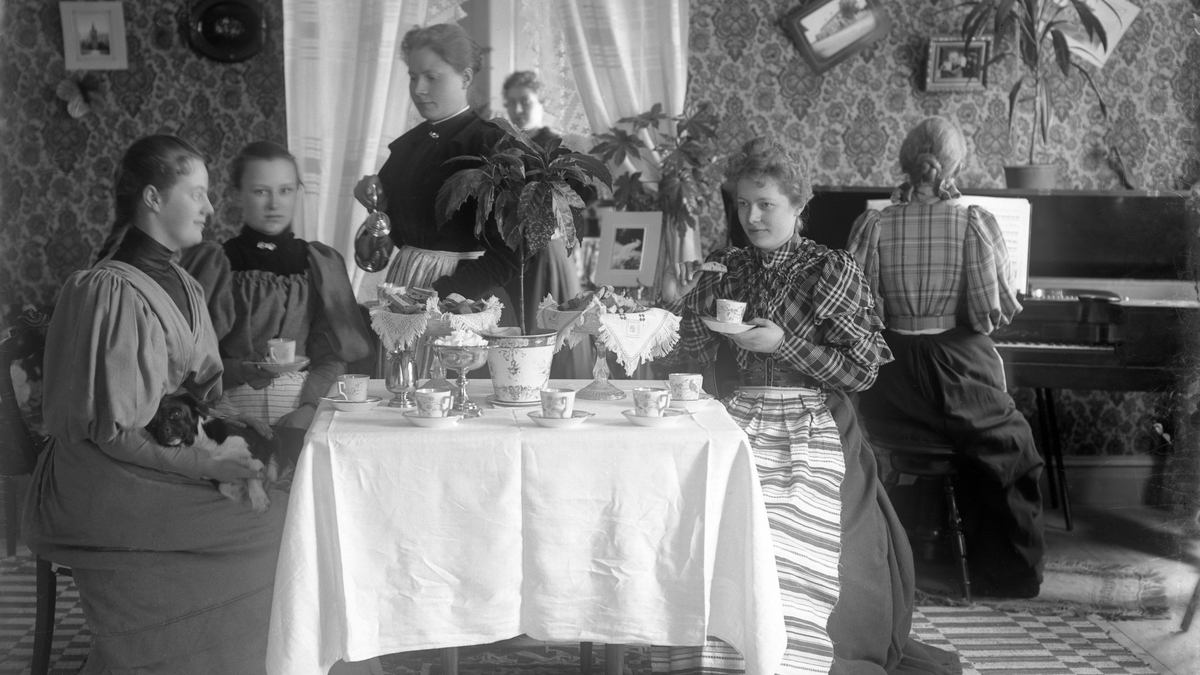 Photographe : Firma Nanny Ekström
Photographe : Firma Nanny Ekström
These cakes were usually homemade and ranged from simple cookies to more elaborate cakes, depending on taste and season. Hostesses would try to impress their guests by offering during these gathering a wide variety of pastries. According to some, the hostess was considered stingy if she prepared less than seven types of cakes, and pretentious if she made more than seven. Kafferep, far more than just a sweet feast, is often seen as a factor that contributed to the emancipation of women.
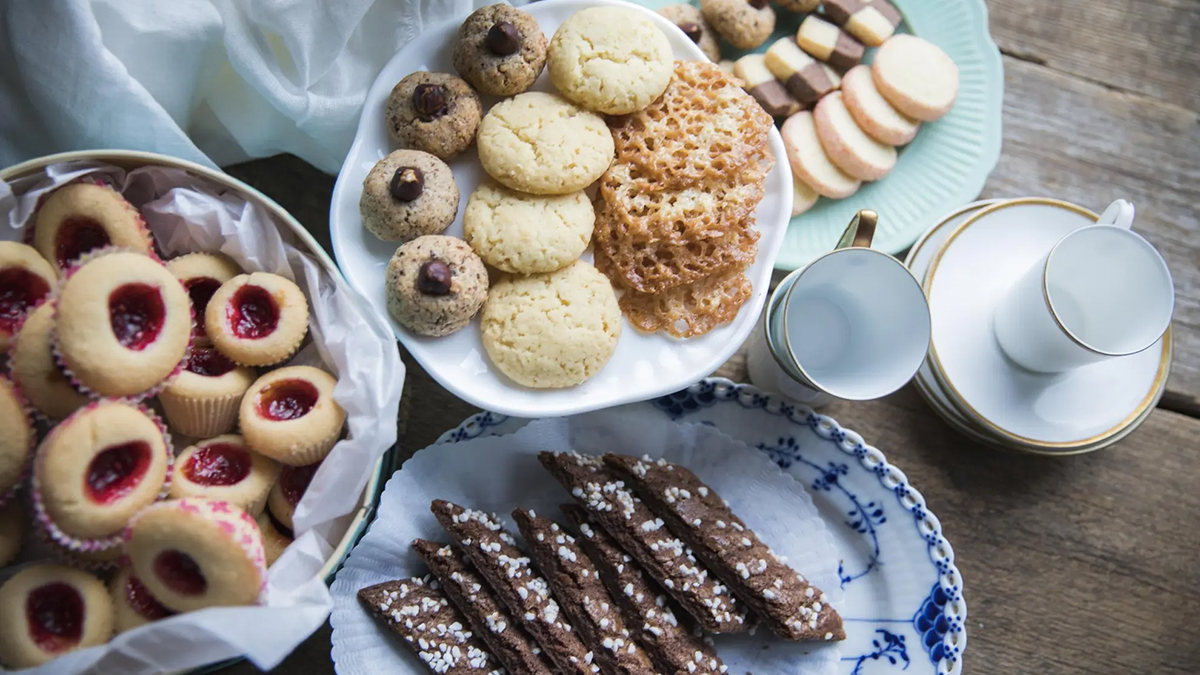 Photo credit: Tina Axelsson/Visit Sweden
Photo credit: Tina Axelsson/Visit Sweden
In an essay from 2011, culinary creator Lina Ahlin explained that this tradition reflected the desire of women in the early 20th century to improve their social position, using cooking as a way to gain recognition. These social gatherings may have encouraged women to come together to advocate for a more egalitarian society, which ultimately led to their entry into the full-time workforce and the granting of the right to vote in 1919. Today, it can be said that the word kafferep is no longer well known by the newer generations, but this tradition of gathering around coffee still survives, at least in part, through the famous fika...
The birth of hallongrotta
More specifically regarding the hallongrotta, it was in the 20th century, and more precisely in 1945 after World War II and the end of rationing, that interest in baking revived. A large pastry competition was organized, resulting in the publication of a book (sju sorter kakor) that gathered over 8,000 recipes. The book became a huge success, completely sold out.
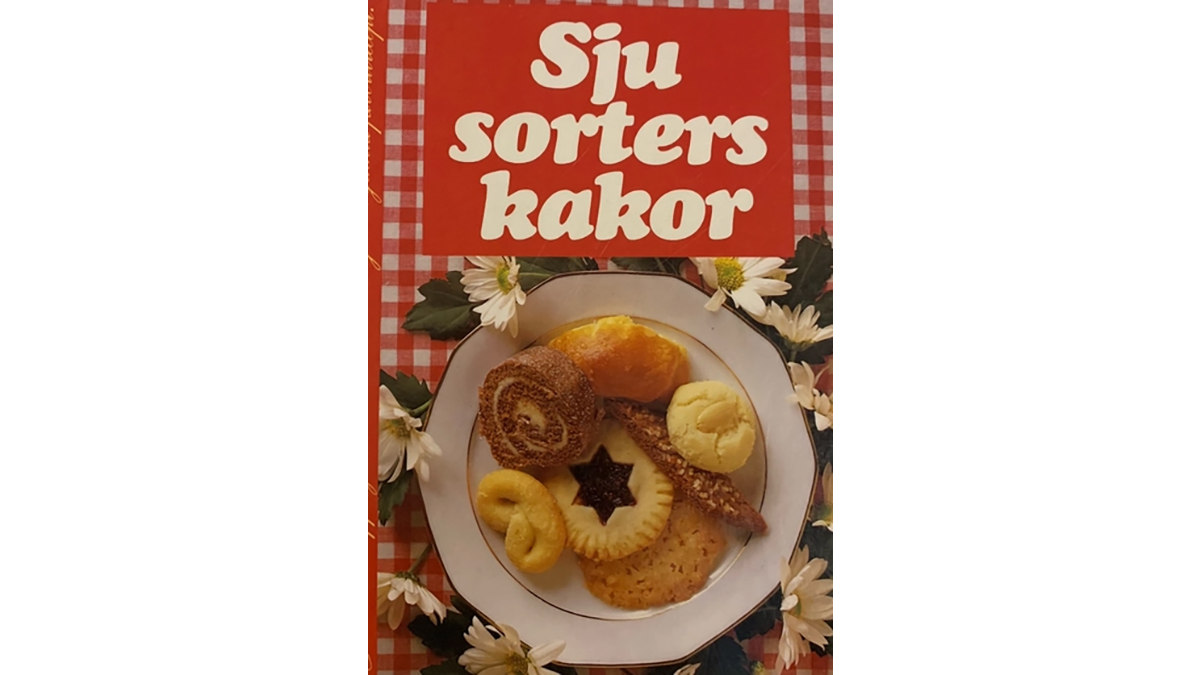
It wasn’t until 1965 that a new edition, revised with modernity in mind (new measurement tools and new accessible products) and new health recommendations (less fat and sugar), was published alongside another competition launched by the food company Bjäre, which would achieve even greater success. 21 pastry chefs competed in 7 categories, and more than 16,000 recipes were created, including the famous hallongrotta. The name of the pastry chef who invented the recipe has not passed into history, but the cookie-cake itself has stood the test of time.
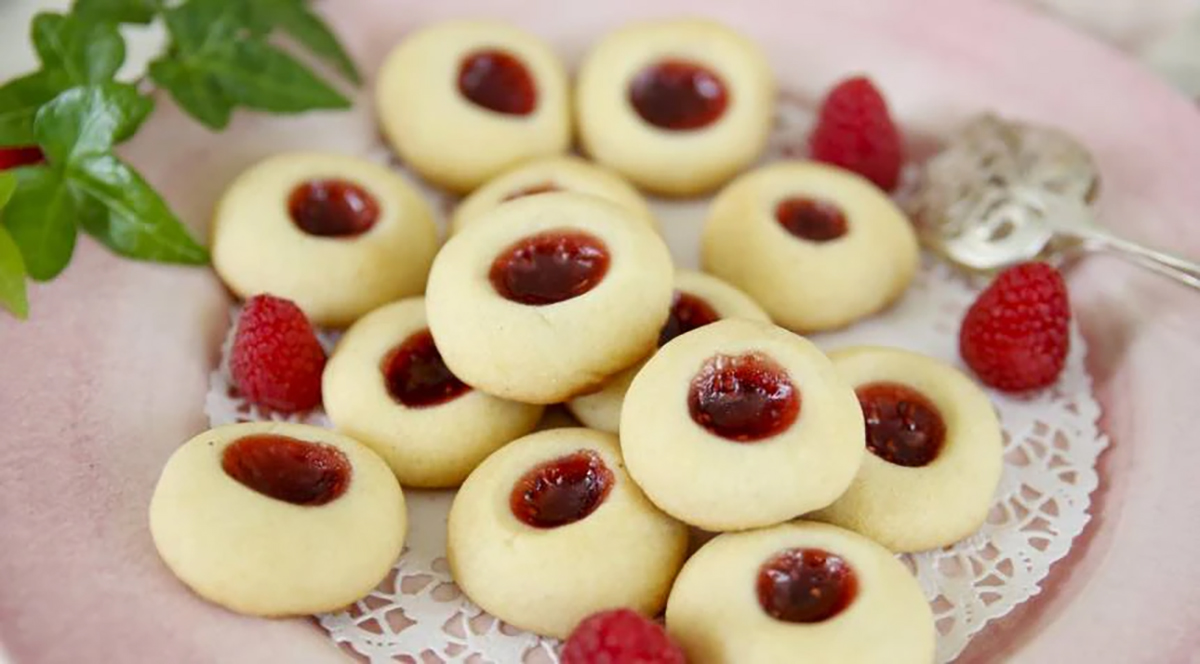 Fredriksfika
Fredriksfika
This cookie-cake is still widely consumed in Sweden today and can be found in all Swedish cafés and bakeries. Its simplicity and sweet, fruity flavor bring the scent of childhood to all Swedes, and its indulgence perfectly embodies the Swedish tradition of fika.
Basic Ingredients, Utensils... and Variations
Basic Ingredients
For the dough, and for about 11-15 servings, you will need:
- 250g of butter at room temperature
- 110g of powdered sugar
- 300g of flour
- 2 teaspoons of vanilla sugar
- Baking powder
- A good pinch of salt
For the filling
- A good raspberry jam
- powdered sugar
- Fresh raspberries
Utensils
- A mixing bowl or a large bowl
- Paper or silicone muffin molds
- A mortar and pestle, a small liqueur glass, or even a lemon squeezer for a more stylish shape
- A sieve
- A measuring cup
- a whisk
Variations
You can add almond powder, licorice powder, cocoa, or saffron to the dough for a bit more indulgence.
You can also add a fresh raspberry on top of the jam for the finishing touch and a fresh taste.
Step-by-Step Recipe
- Preheat the oven to 160°C (320°F) with fan.
- Whisk the butter at room temperature and powdered sugar in a bowl until the mixture becomes fluffy.
- Mix the flour, vanilla sugar, salt, and baking powder. Sift them into the butter and stir until you get a smooth dough. (Add almond powder) mix quickly until the dough is homogeneous.
- Divide the dough into about 11-15 pieces and roll them into small balls.
- Place the balls in muffin molds, there's no need to grease them.
- Flour the mortar, the base of your liqueur glass, or the lemon squeezer, and press the balls to form a cavity in the center, so you can fill it with raspberry jam. I
f the dough cracks, roll the ball again and press once more, then fill the cavity with jam until it’s full. - Bake in the middle of the oven for about 15 to 20 minutes.
- Let the cookies cool in the mold before removing them gently.
The recipe in video
The audio of this video is in french ut you can enable subtitles in the Youtibe settings
 en
en FR
FR IT
IT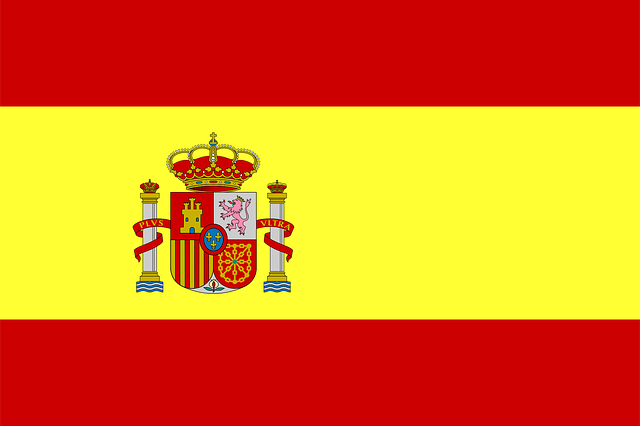 ES
ES
